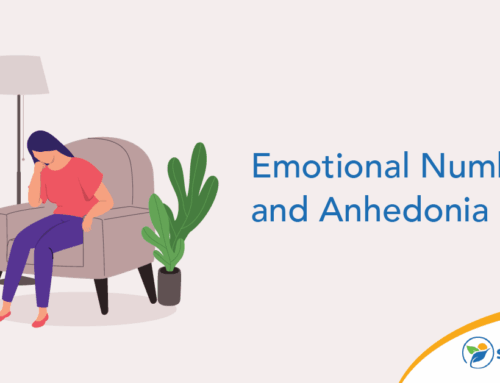Vaping has surged in popularity over the past decade, particularly among young adults and teenagers. These electronic devices heat e-liquid or “juice” to create an aerosol that users inhale into their lungs. With sleek designs and discreet vapor clouds, these devices have made substance use more accessible and less detectable in schools, workplaces and public spaces. While initially marketed as a safer alternative to traditional cigarettes, emerging research reveals significant vaping health risks that shouldn’t be overlooked.
You might be attracted to vaping for its flavored options, its perceived social appeal or the misconception that it’s harmless. However, it’s important to understand that vaping devices can deliver nicotine, THC — the psychoactive component in marijuana — and other substances directly into your bloodstream.
Vaping Health Risks
The vaping health risks are many and are continuing to be discovered as research progresses. One thing is sure, however: When you vape, you’re exposing your lungs to various chemicals that weren’t meant to be inhaled. Some of the immediate health concerns include:
- Severe lung injuries like EVALI e-cigarette or vaping product use-associated lung injury
- Increased risk of seizures
- Elevated heart rate and blood pressure
- Weakened immune system response
According to the Centers for Disease Control (CDC), EVALI has been linked to thousands of hospitalizations and deaths in the United States alone.
The chemicals found in vaping products are particularly concerning. Many e-liquids contain a combination of the following:
- Propylene glycol and vegetable glycerin, usually used as the base ingredients
- Nicotine, which is highly addictive
- Diacetyl, which is linked to serious lung disease
- Heavy metals, including nickel, tin and lead
- Various volatile organic compounds
When heated and inhaled, these substances can cause inflammation and permanent damage to your delicate lung tissue.
How Vaping Affects Mental Health and Addiction
Nicotine addiction is one of the most serious consequences of vaping. Nicotine alters your brain chemistry by triggering dopamine release, creating feelings of pleasure that your brain quickly associates with the act of vaping. This leads to a cycle of dependence that can be extremely difficult to break. For teens and young adults, nicotine exposure can have lasting effects on brain development and increase the likelihood of future substance use disorders.
Beyond traditional nicotine products, vaping devices are increasingly used to consume cannabis concentrates and synthetic substances. These high-potency forms can create stronger dependencies, trigger anxiety and panic attacks and worsen symptoms of depression. They can also impact brain development, especially in younger users.
The psychological aspects of vaping addiction are particularly challenging. The hand-to-mouth habit, social rituals around vaping and sensory experience all create behavioral dependencies alongside the chemical addiction.
Long-Term Effects of Vaping on the Body
While vaping hasn’t been around long enough for comprehensive lifetime studies, researchers are increasingly concerned about long-term vape effects based on what we know about the constituent chemicals and early research findings. Potential long-term consequences include:
- Chronic respiratory conditions
- Cardiovascular disease
- Increased cancer risk
- Compromised immune function
- Oral health problems
The heated aerosol from vaping can cause chronic inflammation in the respiratory system, potentially leading to conditions resembling chronic obstructive pulmonary disease or other permanent lung damage. Your cardiovascular system is also at risk, as nicotine is known to damage blood vessels and contribute to heart disease over time.
Special Risks: Vaping and Other Substances
Vaping technology has evolved to accommodate substances beyond nicotine, creating additional health and legal concerns. You should be aware that vaping devices are increasingly used for cannabis oils and concentrates, including THC and CBD, synthetic cannabinoids and various designer drugs.
These concentrated forms can deliver much higher doses than traditional consumption methods, increasing the risk of adverse reactions and dependency. Additionally, unregulated products may contain dangerous cutting agents like vitamin E acetate. Vaping with these substances can also lead to more frequent use patterns, potentially accelerating addiction and health problems.
Youth and Vaping: A Growing Concern
The impact of vaping on youth represents a particularly troubling public health challenge. With appealing flavors and social media marketing, vaping health risks are often downplayed to younger audiences. Notable concerns include the earlier onset of nicotine addiction and the gateway effect to traditional tobacco or other substances. It can also cause impaired brain development during critical growth periods and have social and academic consequences.
Parents and educators should recognize the signs of vaping, which can be subtle compared to traditional smoking. These might include increased thirst, unexpected sweet scents, decreased sensitivity to flavors and unusual USB drive-like devices.
Preventing Vaping Addiction: Tips for Staying Healthy
If you’re looking to avoid or overcome vaping addiction, consider these practical strategies:
- Understand your triggers. Track when you feel the urge to vape and identify patterns related to stress, social settings or emotions.
- Find healthier alternatives. Exercise, meditation and creative pursuits can provide natural dopamine boosts without harmful substances.
- Seek support. Don’t face addiction alone. Professional counseling, support groups and medical guidance can dramatically improve your chances of success.
- Create vape-free environments. Remove devices and accessories from your space, and avoid situations where vaping is common until you feel confident in your ability to resist.
- Consider cessation aids. Nicotine replacement therapies may help manage withdrawal symptoms as you break the physical dependency.
Remember that setbacks are part of the process. If you relapse, use it as a learning opportunity rather than a reason to give up entirely.
Get Help Now
The vaping health risks are significant and far-reaching, affecting both your physical and mental well-being in ways researchers are still uncovering. By understanding these dangers, you can make more informed decisions about your health.
If you or someone you love is struggling with nicotine addiction or other substance use related to vaping, don’t wait to seek help. Sunlight Recovery offers comprehensive programs designed to address both the physical and psychological aspects of vaping dependence. Take the first step toward a healthier future by reaching out today.







